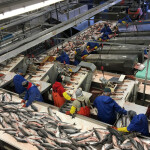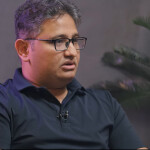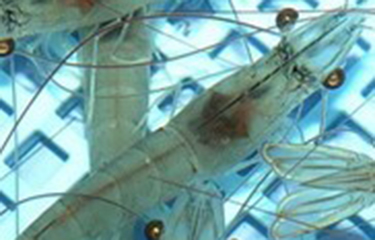Osaka, Japan-based Kansai Electric Power Company (KEPCO) has established a joint venture with IMT Engineering (IMTE) to farm shrimp on land, and to process and sell them.
The move comes amid increasing interest worldwide in recirculating aquaculture systems (RAS), and follows a the creation of a land-based shrimp farm in Kagoshima Prefecture, established by Tokyo-based Nippon Suisan Kaisha (Nissui), which utilizes a bio-floc system. Partial shipments from that operation commenced in 2017. However, even as RAS technology continues to improve, the profitability of such operations remains challenging.
The new joint venture company will farm whiteleg (P. vannamei) shrimp and plans to sell them to food processing companies and restaurants under the brand name "Kouebi." Sales to consumers via e-commerce companies will also be pursued.
The investment ratio for the new company, formed in October and called “Kaiko Yukinoya,” will be 98 percent for Osaka-based KEPCO, and 2 percent for Tokyo-based IMTE. The initial capital is JPY 10 million (USD 95,886, EUR 80,727). Mr. Ryo Akita of Kansai Electric Power Co., Inc. will be the representative executive officer.
A new 16,000-square-meter production facility is planned to be built in Iwata City, Shizuoka Prefecture, aiming to start production in January 2022 and sales in May of the same year. It will have six grow-out pool lanes measuring 12 by 40 meters, in addition to four nursery tanks. When construction begins in January 2020, the corporate capital will be increased to JPY 1 billion (USD 9.6 million, EUR 8 million). Until the new plant is completed, the company will sell whiteleg shrimp produced at a plant owned by IMTE in Myoko City, Niigata Prefecture.
The facility will adopt a recirculating aquaculture system and also plans to apply Internet of Things (IoT), artificial Intelligence (AI), and image analysis for management and control of water quality, temperature, and feeding. The company also plans to apply the results of its technical research to improve survival and growth rates. Specific pathogen-free (SPF) juveniles will be used to produce safe, high-quality shrimp.
The project will apply the "Indoor Shrimp Production System (ISPS)," developed by IMTE and the Japan International Research Center for Agriculture, Forestry and Fisheries (JIRCAS), a collaboration of industry and government. ISPS consists of a grow-out tank, wavemaker, microbial purifier, and oxygen water supplier. A quasi-natural environment with artificial seaweed and hidden places reduces stress for the shrimp. Creation of waves and oxygenated water entering from the bottom of the tank circulates water vertically, the collaborators said. Suspended substances are filtered with a micro-screen and the water is further subjected to biological filtration using microorganisms without adding chemicals.
Clear-water recirculating aquaculture systems, which typically use an external biofilter, and biofloc systems, which use microbes to cleanse the water by converting waste products to food, are two categories of closed aquaculture systems. The ISPS system falls into the former category.
Medium- to long-term plans call for Kaiko Yukinoya to offer technical and business consulting domestically and overseas.
The main drivers of the RAS boom are the ability to secure a location without getting permitted for a marine or estuary site, the ability to offer fresh shrimp in all seasons, and the possibility of offering organic product through tighter bio-security.
However, as land-based shrimp farming methods are not yet standardized, each company is obliged to experiment with biofloc or filtration methods to maintain water quality. Such constant fine-tuning is labor intensive, so that labor costs can be high.
In theory, the closed environment and SPF post-larvae juveniles should lessen disease risk. But close crowding of the intensive systems, along with a desire of producers to avoid using drugs or antibiotics, allow a pathogen to spread quickly once it enters. The limited number of SPF suppliers is also a risk factor.
An example of a recent failure in this realm is the closure of Berezan Shrimp Co. in Langley, British Columbia, Canada at the end of 2019. The reason, as reported in a 13 December Hatchery International article, was a combination of disease loss and quarantine of the facility, lack of profitability due to high labor costs, and inability to scale up the biofloc system.
One of the few studies that includes data from commercial RAS shrimp operations – rather than only from academic settings – is a recent thesis paper that breaks down costs of land-based RAS vannamei culture for farms in the U.S. Midwest, to see how they are affected by replacing sea salt with low-cost salt mixtures derived from industrial salt components. The paper, “A Bioeconomic Model of Indoor Pacific Whiteleg Shrimp (Litopenaeus Vannamei) Farms with Low-Cost Salt Mixtures,” is written by Patrick N. Maier, a graduate student at Purdue University.
“The farmers interviewed for the study receive a price premium by selling directly to consumers and restaurants, but this market has limited sales volume, causing farmers to explore other wholesale distribution channels where offered prices will be lower but at higher sales volume,” Maier wrote.
The average selling price was estimated at USD 18.00 (EUR 15.04) per pound. The break-even price was USD 16.24 (EUR 13.57) for an eight-tank system, but USD 14.92 (EUR 12.46) for a 16-tank farm. Maier told SeafoodSource that the shrimp were grown to a size of 22 grams head-on, shell-on.
Though the farmers in the study all had between eight and 10 tanks (including a nursery tank), the paper indicated that under stress tests of eight, 16, and 24-tank setups, 16-tank systems had a significantly higher chance of earning a profit than eight-tank systems. There was a slight improvement for 24-tank farms. Maier said that the main cost saving was a larger building housing more tanks, though there were also some economies of scale on the larger farm's equipment purchases and maintenance.
Few of the farms in Maier’s study planned to increase in size.
“Some had plans to scale up and knew that was a way to mitigate some of the inherent risk, but most of the small-scale farmers I spoke with are just trying to make ends meet. It's a very tough business to be in due to both internal and external risks. It will be very difficult for the U.S. to build its RAS shrimp industry without major commercial investment and broader standardization of management practices,” he said.
Photo courtesy of Kansai Electric Power Company







